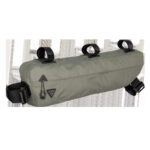Selecting a bicycle for a 10-year-old can feel like navigating a complex upgrade. You want something that fits well now, but also offers room to grow, much like considering whether to upgrade bike components or invest in a completely new ride. The decision involves balancing immediate needs with future growth, a common consideration when thinking about bikes for kids as they rapidly change sizes and interests. Just as cyclists ponder the benefits of new tech versus sticking with reliable older gear, parents face similar choices when picking out bikes for their children.
For a 10-year-old, the world of bikes opens up significantly compared to when they were younger. They’re no longer limited to small balance bikes or basic single-speed models. At this age, kids are often ready for bikes with gears, hand brakes, and larger wheel sizes. This mirrors the adult cyclist’s progression through different bike types and components as their riding skills and preferences evolve. Thinking about a bike for a 10-year-old requires considering what kind of riding they’ll be doing. Will it be mostly for neighborhood streets and bike paths, or are they venturing into more adventurous terrains? This is similar to an adult cyclist choosing between a road bike, mountain bike, or hybrid.
One of the first considerations is size. A bike that’s too big or too small can be uncomfortable and even unsafe for a child. Generally, 10-year-olds fit well on bikes with 24-inch wheels, but this can vary depending on the child’s height. It’s crucial to ensure they can comfortably reach the handlebars and pedals, and have a bit of standover clearance. This aspect of fit is universal, whether it’s a child’s first geared bike or an adult cyclist fine-tuning their position on a high-performance machine. Proper sizing enhances control and enjoyment, making the riding experience positive and encouraging further engagement with cycling.
Thinking about components, gears are a significant step up for many 10-year-olds. Gears allow them to tackle hills and longer distances with greater ease, expanding their riding possibilities. The type of gearing can vary, from simple systems with a limited number of gears to more complex setups. For most 10-year-olds, a bike with 7 to 21 speeds is usually sufficient. This mirrors the adult cyclist’s choice in gearing depending on their typical terrain and riding style, whether it’s a wide-range cassette for mountain climbs or closer ratios for flat road racing.
Brakes are another key safety feature. Hand brakes, which are standard on bikes for this age group, provide more effective stopping power than coaster brakes (pedal-back brakes) found on smaller children’s bikes. There are different types of hand brakes, such as V-brakes or disc brakes. Disc brakes, while offering superior performance, might be more common on higher-end kids’ bikes, similar to how adult cyclists might choose between rim brakes and disc brakes based on performance and budget. Ensuring the brakes are easily reachable and responsive for smaller hands is paramount for safety and confidence.
The frame material also plays a role, though perhaps less critical for a 10-year-old’s bike compared to an adult’s performance bike. Kids’ bikes are commonly made from aluminum or steel. Aluminum frames are lighter, which can be beneficial for younger riders, making the bike easier to handle and maneuver. Steel frames are typically more durable and often more affordable, offering robustness to withstand the sometimes less-than-gentle handling by kids. This echoes the adult cyclist’s considerations of frame material, balancing weight, durability, and cost depending on their riding needs and budget.
Tires are another aspect to consider. Wider tires, around 2 inches or more, provide better stability and comfort, especially on uneven surfaces. This is particularly beneficial for kids who are still developing their balance and bike handling skills. Tire tread pattern can also be chosen based on the type of riding – knobby tires for off-road trails, smoother tires for pavement. This parallels the adult cyclist’s selection of tire width and tread based on terrain and riding conditions, from wide, knobby mountain bike tires to narrow, slick road bike tires.
Thinking about budget is always important. Bikes for 10-year-olds range in price, and it’s possible to find good quality bikes at various price points. Setting a budget beforehand helps narrow down the choices and ensures you’re not overspending. Consider what features are most important for your child’s riding needs and prioritize accordingly. Just as an adult cyclist might weigh the cost of upgrading components versus buying a new bike, parents should consider the balance between features, quality, and price when choosing a bike for their 10-year-old.
Ultimately, choosing Bikes For 10 Year Olds is about finding a balance of size, features, and budget that fits the child’s current needs and encourages their enjoyment of cycling. It’s about providing them with a reliable and fun way to explore their world, much like an adult cyclist seeks the perfect bike to enhance their riding experience. By considering these factors, you can confidently select a bike that will serve your 10-year-old well and foster a lifelong love for riding.

